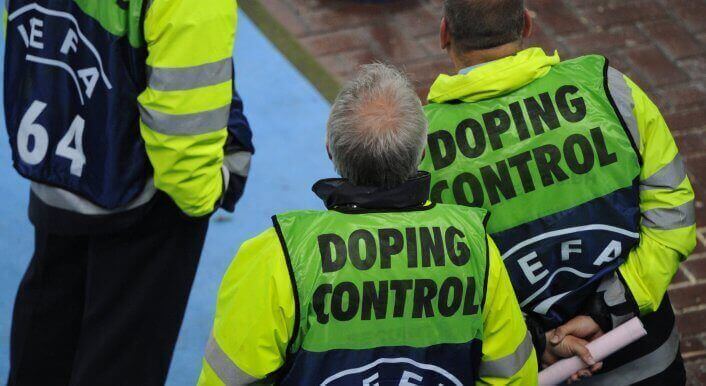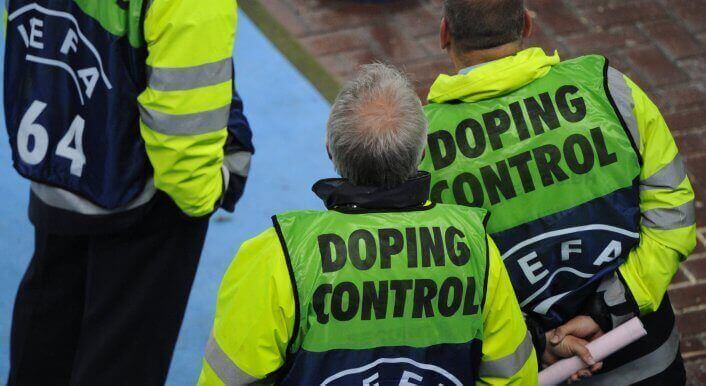European doping test systems: Record positives in Portugal
More than 100 positive doping tests have been discovered in Portuguese football over the last ten years. That’s quite remarkable and by far the record number in European football. What’s the reason for so many positive tests? The answer is to be found in the Portuguese control system.

In December, we published the first results of our research about doping controls in European football. Now we dig a little deeper and are going to analyse the various systems. We kick it off with Portugal.
Who gets tested and where?
Portugal’s anti-doping agency ADoP carries out all tests. A minimum of two matches of the first division (Liga ZON Sagres) and one match of the second division (Liga2 Cabovisao) will be drawn every match day. There are only three out-of-competition tests per team in the first division and two per team in the second division over the whole season.
Compared to other European countries, Portuguese testers carry out an unusual high amount of tests in non-professional football, Futsal as well as women’s football. Only two thirds of the 1.000 tests in 2012 (745 IC/252 OOC) where actually carried out in the first or second division.
Every test will be analysed by the WADA-accredited lab in Lisbon.
Why are there more than 100 positives?
Concerning to Luis Horta, especially amateurs get caught. Horta, the ADoP chairman, claims that is due to using what he calls „social drugs“ like marihuana, cocaine or other party drugs. Therefore, Horta doesn’t think Portuguese football has a doping problem.
Horta says, there are quite a lot tests in football. He believes that the rate of positive tests would rise the less tests are carried out. The testing system discourages many footballers, writes Horta. However, Horta is well aware of the amount of money as well as the various interests that are present in football.
Due to privacy laws Horta refuses to hand out more information about the positive tests like the age of the player or the substance he was tested positive for. Without that itemisation we are not able to give a more profound analyses of those doping cases.
What’s the standard of the national testing system?
Blood testing only take splace out-of-competition, but the numbers are almost ridiculous. In 2012, there were 33 blood tests, but only 15 were analysed for CERA and 18 for HGH. As in Germany the players are not asked for a blood test after matches.
In 2012, the Lisbon lab only analysed 42 urin samples for EPO. In our opinion, that is far too little concerning the popularity of the substance.
However, there is something that works better than in Germany. All players of the first and second division are obliged to name a time slot of 60 minutes to be available for testing outside the usual training. For privacy reasons, the ADoP doesn’t use the official ADAMS system implemented by WADA but a different software where also lower division players need to register.
How could the system be improved?
Competition testing costs about 165.000 euros and is financed by the Portuguese football federation. That means the federation has full control over the amount of testing. The more they pay, the more testing there is. At least out-of-competition testing (120.000 euros) is funded by the tax money of the ADoP.
Right now, there is not enough in-competition testing. The main focus in-competition testing with 75 per cent of the tests carried out there. Between match days there is a lot of opportunity to manipulate.
Where there popular doping cases?
Just before the 2002 world cup two players were banned from the national team after positive tests. Substitute goalkeeper Joaquim „Quim“ Silva was banned for six months after he was tested positive for Nandrolone. A couple of hours before the final squad nomination, the positive test of Daniel Kenedy was published. Kenedy was caught for using the blood thinner Furosemide. He received a ban for 18 months which was later reduced to five months.
Another Nandrolone case was Nuno Assis of Benfica after a first division match against CS Maritimo in 2005. The ban was quite unusual as it was parted into two parts, one to be served in the remainder of the 2005/06 season the other one in the 2006/07 season. There was a longer discussion between the World Anti-Doping Agency (WADA), the player Assis and also the portuguese football federation (FPF) about the doping ban period. WADA wanted to ban Assis with the standard period of two years. At the end the parties couldn’t reach an agreement. The Court of Arbitration for Sport (CAS) spoke the final word in this case and reduced it to the half of time (.pdf file with CAS decision).
There was another at least interesting story before the 2012 world cup as team manager Carlos Queiroz allegedly prevented an out-of-competition test of his team. Queiroz was banned for six months by ADoP but the ban was later annulled by a CAS decision (.pdf file with CAS decision).
Where’s the data from?
We exchanged a decent number of emails with ADoP chairman Luis Horta. We draw further information from the annual ADoP report and the 2012 WADA analyses. We were also able to filter a couple of doping cases from the anti-doping database ADDB.
Do you have further information on Portugal?
Are you an expert on Portuguese football? Do you have further information on the national testing system? Are you aware of doping cases we haven’t mentioned? Do you know players, managers, coaches, doctors or other persons in Portuguese football that we should take a closer look on?
We are also going to analyse the bigger European football nations in the upcoming weeks. We’ll take a closer look on England, Spain, Italy, France and a couple of smaller nations. We gladly welcome any support fort the analyses.
If you prefer to contact us anonymously we offer a encrypted data transfer one the upper right side of this page.
translation: Thomas Bachmann



